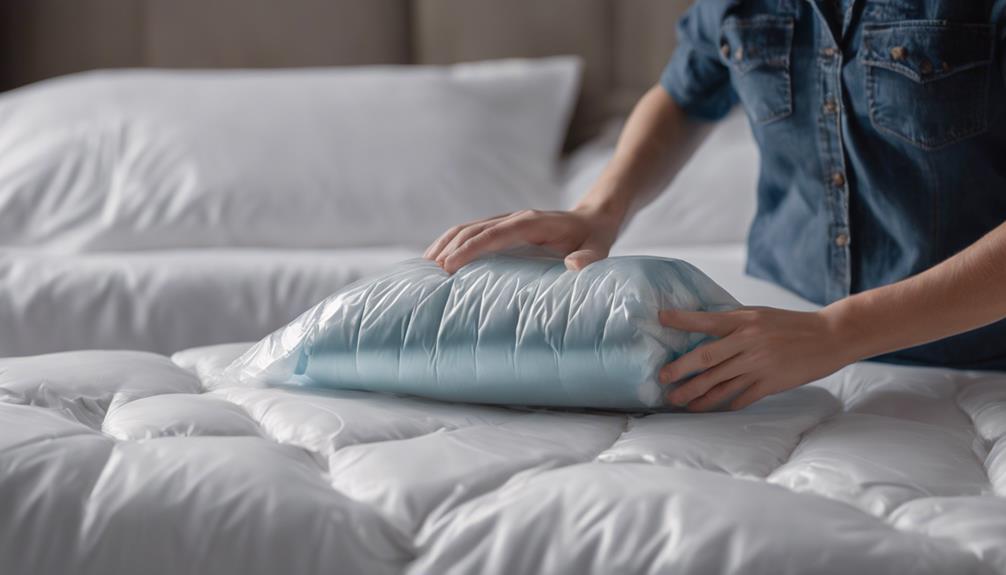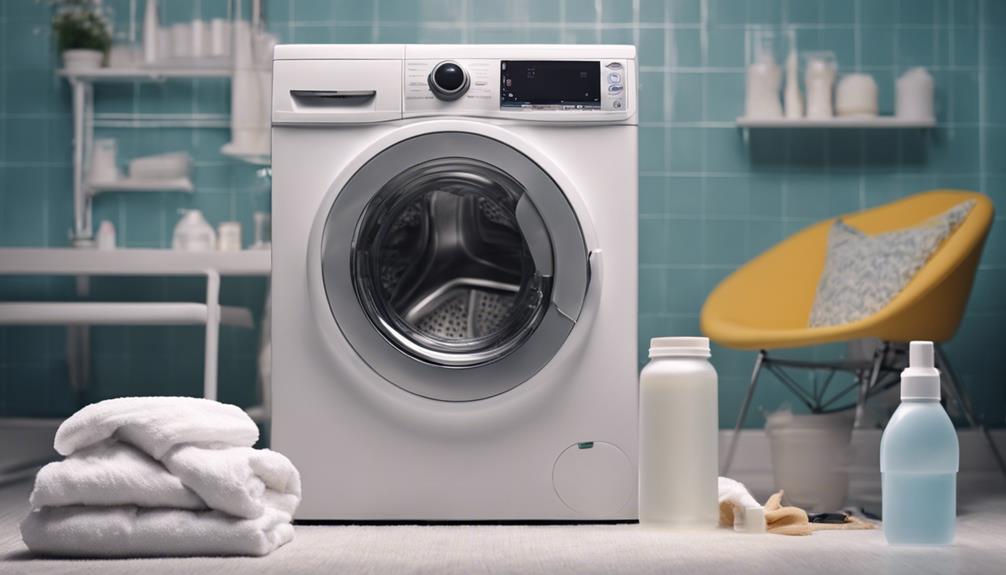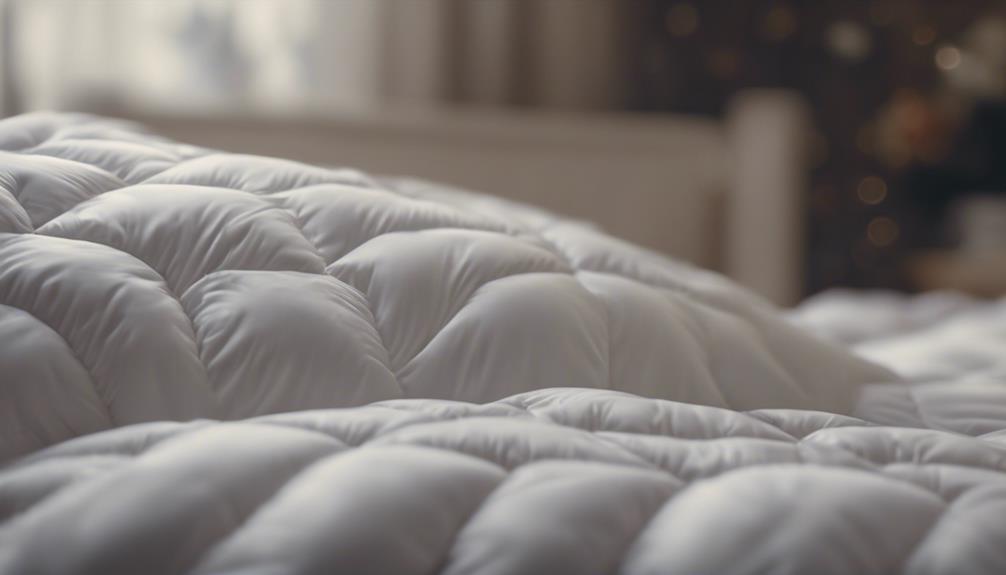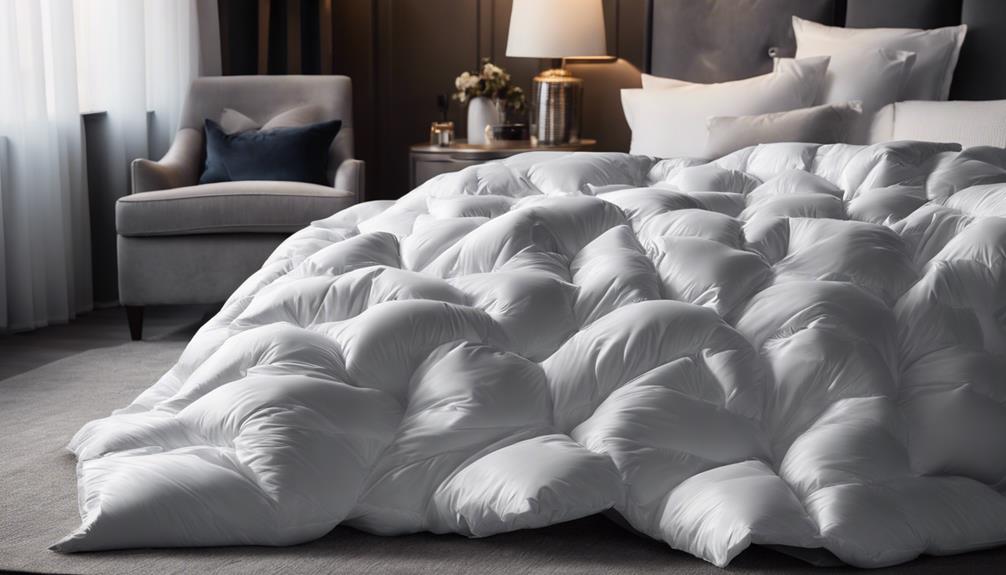You can use a vacuum seal to compress a comforter for more efficient storage. This technique decreases the size of the comforter and shields it from moisture, odors, and dust. However, please note that vacuum sealing may impact the fluffiness and insulation of the comforter. To vacuum seal a comforter, begin with a clean, dry comforter placed in a large storage bag. Gently insert the comforter without compressing it too much, leaving some air inside the bag. Opt for sturdy bags with double seals and airtight valves for optimal results. When storing the comforter long-term, ensure it stays clean, dry, and well-folded to preserve its quality.
Key Takeaways
- Vacuum sealing comforters is efficient for storage.
- Use proper bags to protect comforter integrity.
- Avoid over-compression to maintain fluffiness.
- Ensure comforter is clean and dry before sealing.
- Vacuum sealing can compromise insulation effectiveness.
Pros of Vacuum Sealing Comforters
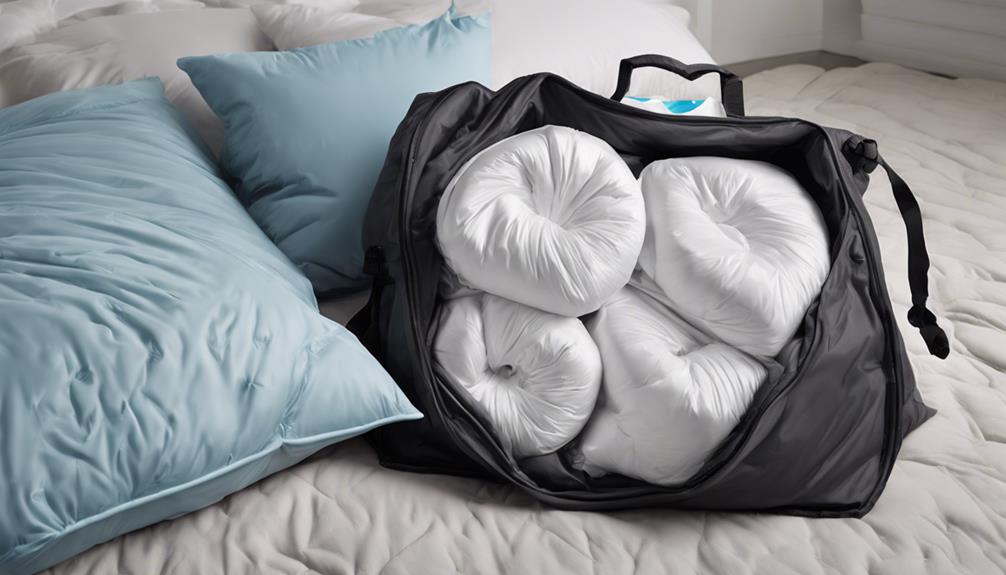
What're the benefits of vacuum sealing comforters?
Vacuum sealing comforters offers numerous advantages, especially when it comes to efficient storage. By using vacuum storage bags, bulky bedding like comforters can be compressed to a fraction of their original size, making them ideal for storing in small spaces such as closets or under beds.
This method not only saves space but also helps protect comforters from dampness, odors, and dust during storage, keeping them fresh for longer periods.
Additionally, vacuum-sealed comforters are easier to handle and transport. When it's time to unpack, these comforters can be easily reshaped and fluffed, regaining their original size and fluffiness without much effort. This convenience makes vacuum sealing a popular choice for those looking to streamline their storage solutions.
However, it's essential to note that while vacuum sealing is suitable for most comforters, it isn't recommended for down or feather duvets, as the compression can damage the delicate filling. Overall, utilizing vacuum bags for storing comforters can ultimately save money by maximizing space efficiency.
Cons of Vacuum Sealing Comforters
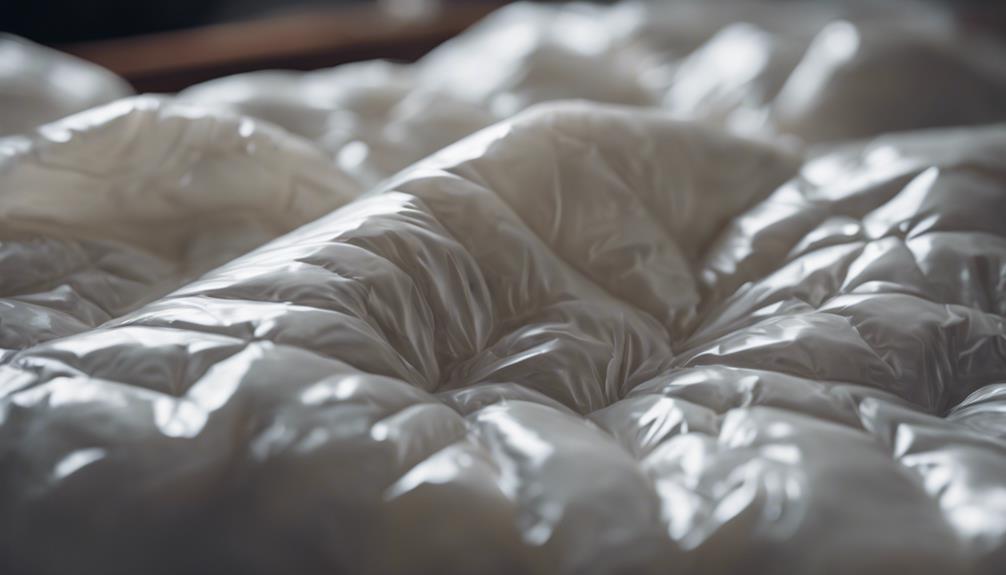
Vacuum sealing comforters may compromise their insulation effectiveness, leading to potential damage to down or feather-filled bedding. When comforters are compressed excessively, their original fluffiness can be ruined, affecting their ability to provide warmth.
Full feathers in comforters have brittle quills that can snap when vacuum sealed, diminishing their quality. Using vacuum storage bags that fully compress comforters can lead to potential damage, especially when storing bulky items for long-term storage. It's advisable to avoid vacuum sealing comforters if you aim to preserve their quality and longevity.
While vacuum sealing can save space, it's essential to take into account the impact on the bedding's material and structure before proceeding. Proper storage is essential for maintaining the loft and overall condition of comforters, especially when dealing with delicate bedding materials.
Step-by-Step Guide to Vacuum Sealing Comforters
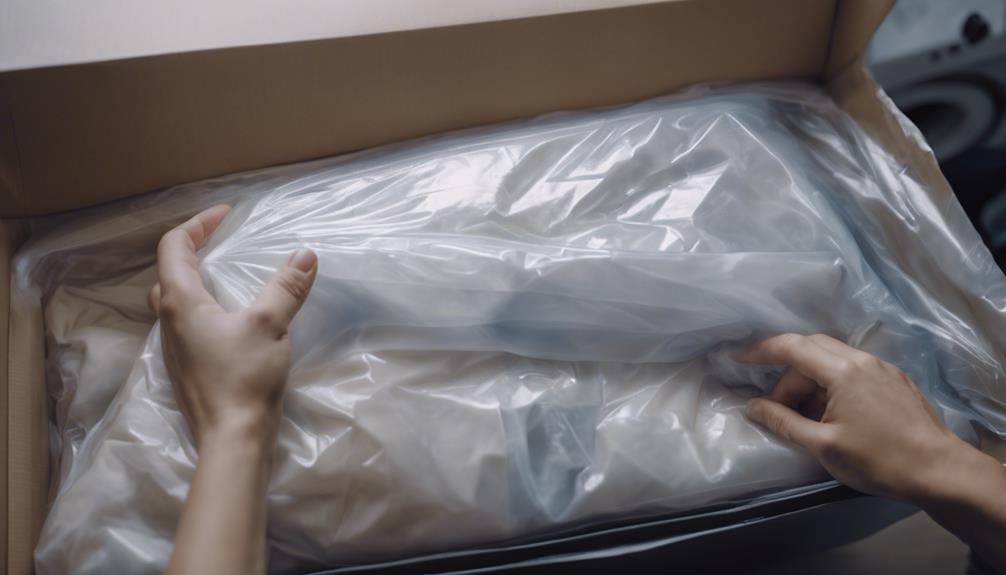
When considering vacuum sealing comforters, it's important to follow a step-by-step guide to guarantee proper storage and preservation.
Start by ensuring the comforter is clean and completely dry before beginning the process.
Using a large vacuum storage bag that can accommodate the size of the comforter is essential to effectively remove excess air and save storage space.
Carefully place the comforter inside the bag, making sure not to over-compress it to prevent damage to the filling.
When sealing the bag, leave a small amount of air inside to maintain the fluffiness of the comforter.
This step-by-step approach will help you make the most out of your vacuum sealing experience, allowing you to efficiently store your comforters while keeping them in good condition for future use.
Best Vacuum Seal Bags for Comforters
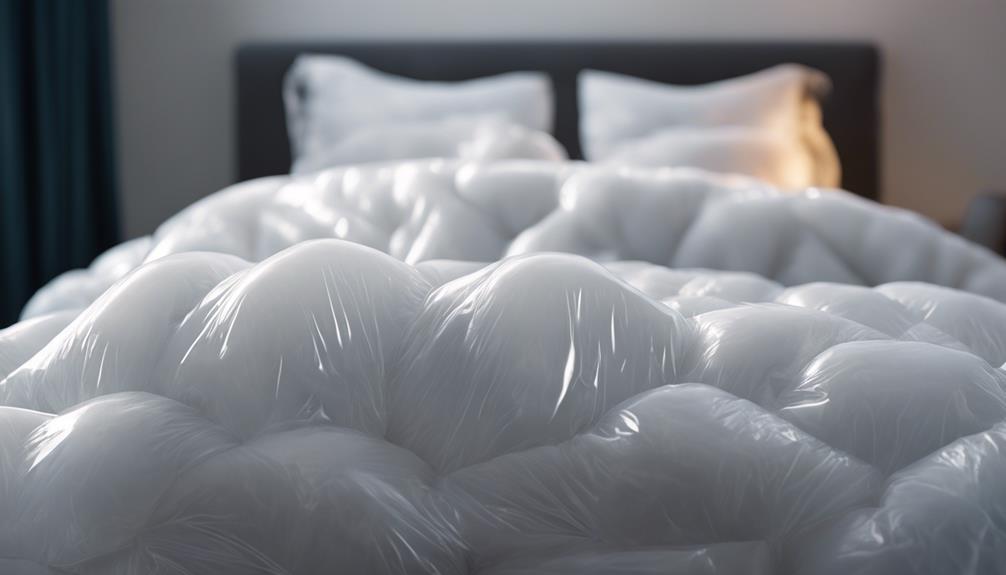
For the best storage of comforters, selecting durable vacuum seal bags with a double seal and airtight vacuum valve system is crucial.
When choosing vacuum seal bags for comforter storage, opt for ones that come in various sizes to accommodate different comforter dimensions. Look for bags with a transparent design, allowing easy identification of the comforters stored inside.
Properly vacuum sealing a comforter can greatly reduce its size, making storage more efficient.
Additionally, using vacuum seal bags helps protect comforters from dust, moisture, and pests during storage. The airtight vacuum valve system ensures a secure seal, keeping the comforter in excellent condition until it's needed again.
Tips for Long-Term Comforter Storage
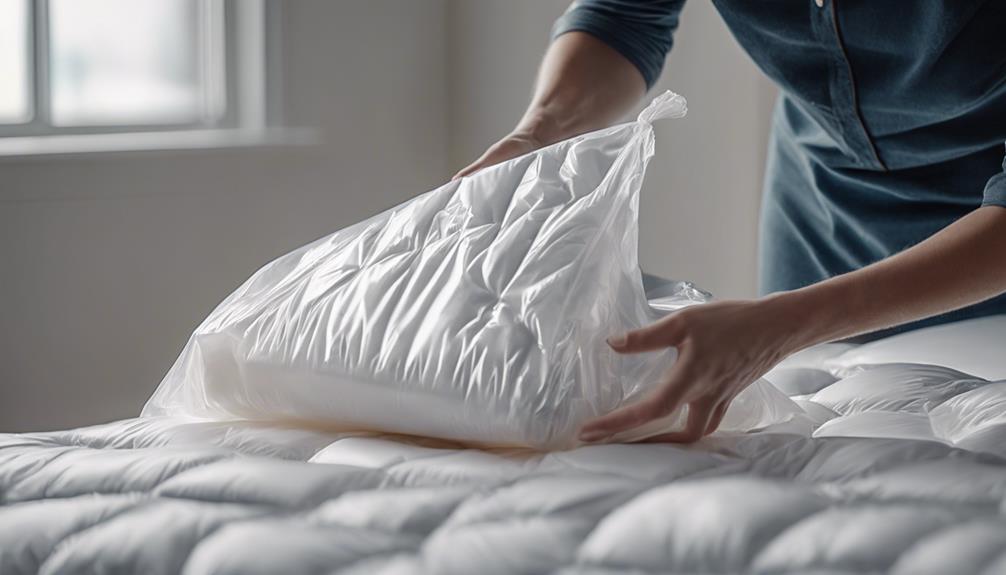
One practical approach to ensuring long-term comforter storage involves using vacuum storage bags with a proper seal. Before vacuum sealing, it's essential to make sure the comforter is clean, dry, and well-folded. This preparation helps prevent any moisture or odors from getting trapped during storage.
When compressing the comforter in the vacuum bag, avoid overdoing it to prevent damage to the filling. Ideal compression without excessive force is key to maintaining the comforter's fluffiness over time.
Frequently Asked Questions
Is It Okay to Vacuum Seal Down Comforters?
Vacuum sealing down comforters isn't recommended. Compressing feathers too tightly can damage them, especially since full feathers have brittle quills that may snap when compacted.
Over time, vacuuming down bedding might reduce its insulation effectiveness. Squashing comforters can ruin their fluffiness, and using vacuum bags that fully compress feathers can risk damaging expensive bedding.
It's best to avoid vacuum sealing down comforters to preserve their quality and longevity.
Is It OK to Vacuum Seal Blankets?
Vacuum sealing blankets can compromise their fluffiness and warmth due to compressed fibers. It may lead to wrinkles and loss of original shape. We advise against vacuum sealing blankets for extended periods to maintain quality and comfort.
It's important to preserve the insulation and coziness of your blankets by avoiding vacuum sealing. Consider alternative storage methods to safeguard your blankets remain in top condition and ready for use when needed.
What Is the Best Way to Store Comforters?
When storing comforters, it's crucial to promote proper airflow and prevent mold growth by using large cotton bags or closet shelves. To maintain fluffiness and prevent damage, avoid compressing feathers in down comforters.
For synthetic or down alternative comforters, it's advisable to use vacuum-seal storage bags after confirming they're clean and dry. However, refrain from storing feather or goose down comforters in vacuum bags to prevent damage.
Consider Neusu non-compression storage bags for feather or down bedding to maintain quality and prevent damage.
Is It Okay to Vacuum Seal a Puffer Jacket?
Vacuum sealing a puffer jacket may compress the insulation, reducing its warmth retention and potentially damaging its structure. It's generally not recommended for long-term storage.
To maintain the loft and insulation properties of a puffer jacket, opt for hanging or folding it loosely. Vacuum sealing can impact the effectiveness of the insulation, so it's advisable to explore other storage options for your puffer jacket.
Can Vacuum Sealing Damage My Comforter?
Vacuum sealing can damage your comforter if not done properly. The lack of airflow can compress the fibers, reducing fluffiness. It’s best to maintain the fluffiness by opting for clean comforter dry cleaner locations instead of vacuum sealing to preserve your comforter’s quality.
Conclusion
To sum up, vacuum sealing your comforter can be a great way to save space and protect it from dust, dirt, and pests.
Just make sure to follow the proper steps and use the right vacuum seal bags for best results.
By taking the time to vacuum seal your comforter, you can guarantee it stays fresh and clean for whenever you need it next.
Remember, a well-sealed comforter is a happy comforter!
